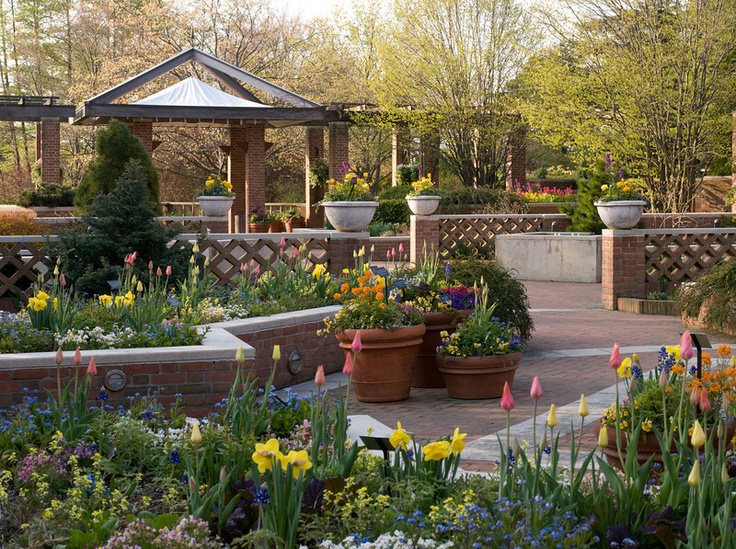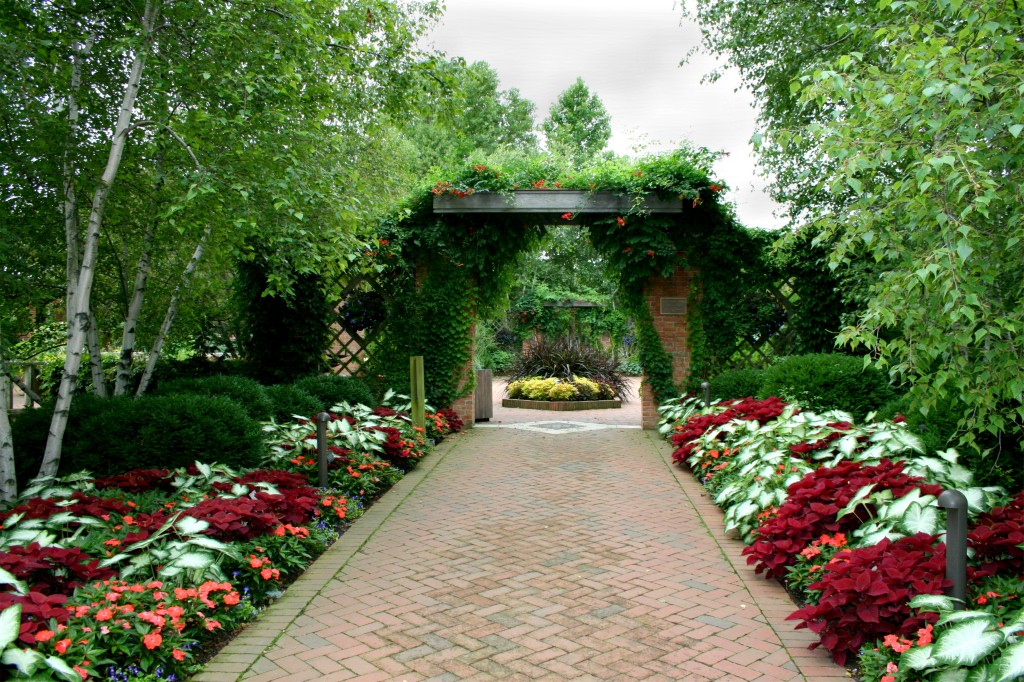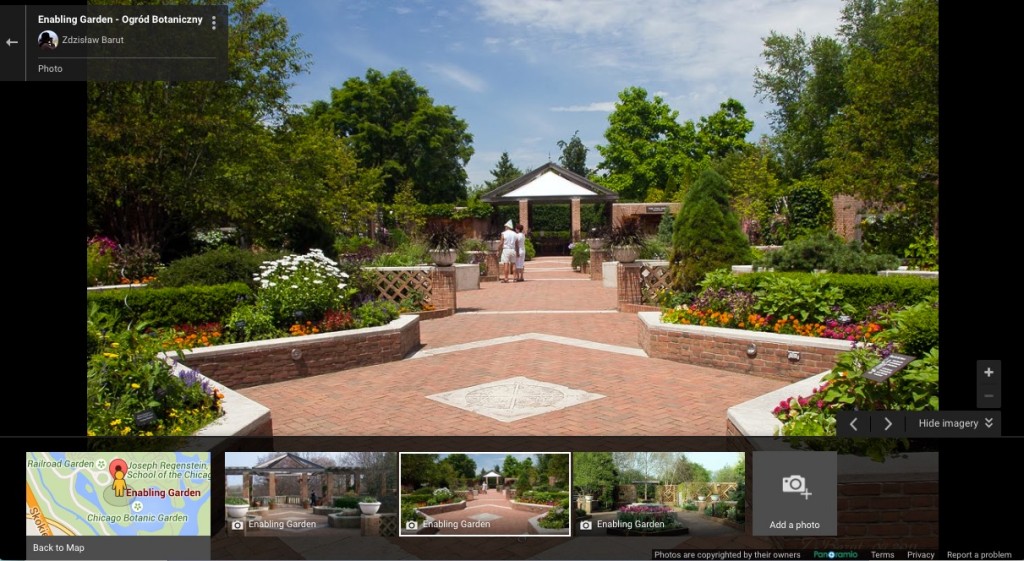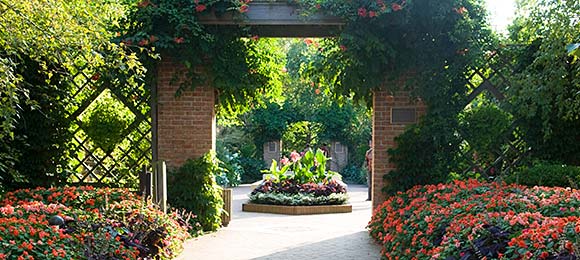In our Open Voices blog we share insight from leaders in our communities who are advancing what it means to have sacred, open green spaces in our cities.
As you enter the Buehler Enabling Garden, you will delight in how enveloped and comfortable you feel. It is nestled on one of Chicago Botanic Garden’s nine interconnected islands totaling 385 acres and six miles of lake shoreline. The Enabling Garden itself consists of three interconnecting outside “rooms” enclosed by lattice walls and interlaced with flowers, vegetables and vines.

The enabling garden serves the community in many ways. It serves as a hands-on teaching garden and for delivering therapeutic horticulture programs. The garden has paved, accessible paths encouraging elders and others with mobility needs to use and interact with the space. The space invites children to use all their senses to smell and touch the minty, fuzzy geraniums. Recent veterans can take a moment for themselves.

Every TKF Sacred Place includes four specific design elements which work together to support the TKF mission of offering a temporary place of sanctuary, encouraging reflection, providing solace and engendering peace. These design elements include a Portal, a Path, a Destination and a Surround–each of which serves an important purpose in the overall design of the space.These design elements emerged organically from decades of sponsored spaces throughout the U.S. Interestingly, these design elements are common to many sacred spaces across cultures and time. Although not funded through the Nature Sacred Award, the Enabling Garden is one example of a space that provides a Sense of Surround. A space providing security and separation from the stress and challenges of everyday life.
We recently talked with the coordinator for the Buehler Enabling Garden, Alicia Green, and will share our talk with her next week. Before learning more about this space in our upcoming blog post, you can virtually tour the urban green space yourself and learn about pollinators, horticultural therapy programming, photography possibilities, and rose gardens using their guided tour smartphone app and website: http://www.chicagobotanic.org/visit/map
Encouraging the use of technology in green spaces is not what we would typically promote. Yet, the Chicago Botanic Garden is one of many urban parks turning to smartphone apps to aid an experience. The Washington Park Arboretum is another example of a place offering location based, guided tours for individuals at their own pace. These apps provide guided tours themed for photographers, birders, native plant enthusiasts, and children. These apps are not aimed at Elders or those with mobility needs, although providing information that can be accessed at one’s own pace should be considered.
Another experience that can be surprisingly immersive and calming is to explore the Botanic Garden using Google Maps. Click on the map to explore:

An interesting line of research within health and nature is whether virtual nature, or the mediation of nature experience through technology, is beneficial to human health. This line of research began with Rachel and Stephen Kaplan, a team of Nature and Health researchers still active today.1 Their early research asked participants to rate their preference for images of nature or urban scenes using slides. This initial investigation revealed a strong preference of nature images over urban, but the reasons why or the variables at play were not easily apparent then.
Researchers since the early 1970s have developed novel ways to examine why we are attracted to certain elements within nature, or what types of designed park spaces appeal across cultures. A practical and immediately beneficial research of recent are projects hoping to provide healing to those in need 2:
“Exposure of individuals to natural environments, such as forests and coastlines, can promote stress reduction and assist in mental recovery following intensive cognitive activities. Settings as simple as hospital window views onto garden-like scenes can also be influential in reducing patients’ postoperative recovery periods and analgesic requirements. This paper reviews the evidence supporting the exploitation of these restorative natural environments in future healthcare strategies. The paper also describes early research addressing the development of multisensory, computer-generated restorative environments for the benefit of patients with a variety of psychologically related conditions (including depression, attention deficit disorder, pain, and sleep deficit), who may be unable to access and experience real natural environments, such as those in hospices, military rehabilitation centers, and long-term care facilities.”
1 Kaplan, S., R. Kaplan, and J.S. Wendt. 1972. Rated preference and complexity for natural and urban visual material. Perception and Psychophysics 12: 354-356.
2 Depledge, M. H., R.J. Stone, and W.J. Bird. 2011. Can natural and virtual environments be used to promote improved human health and wellbeing? Environmental Science and Technology 45: 4660-4665.
See Also: Valtchanov, D., K.R. Barton, and C. Ellard. 2010. Restorative effects of virtual nature settings. Cyberpsychology, Behavior, and Social Networking 13: 503-512.

